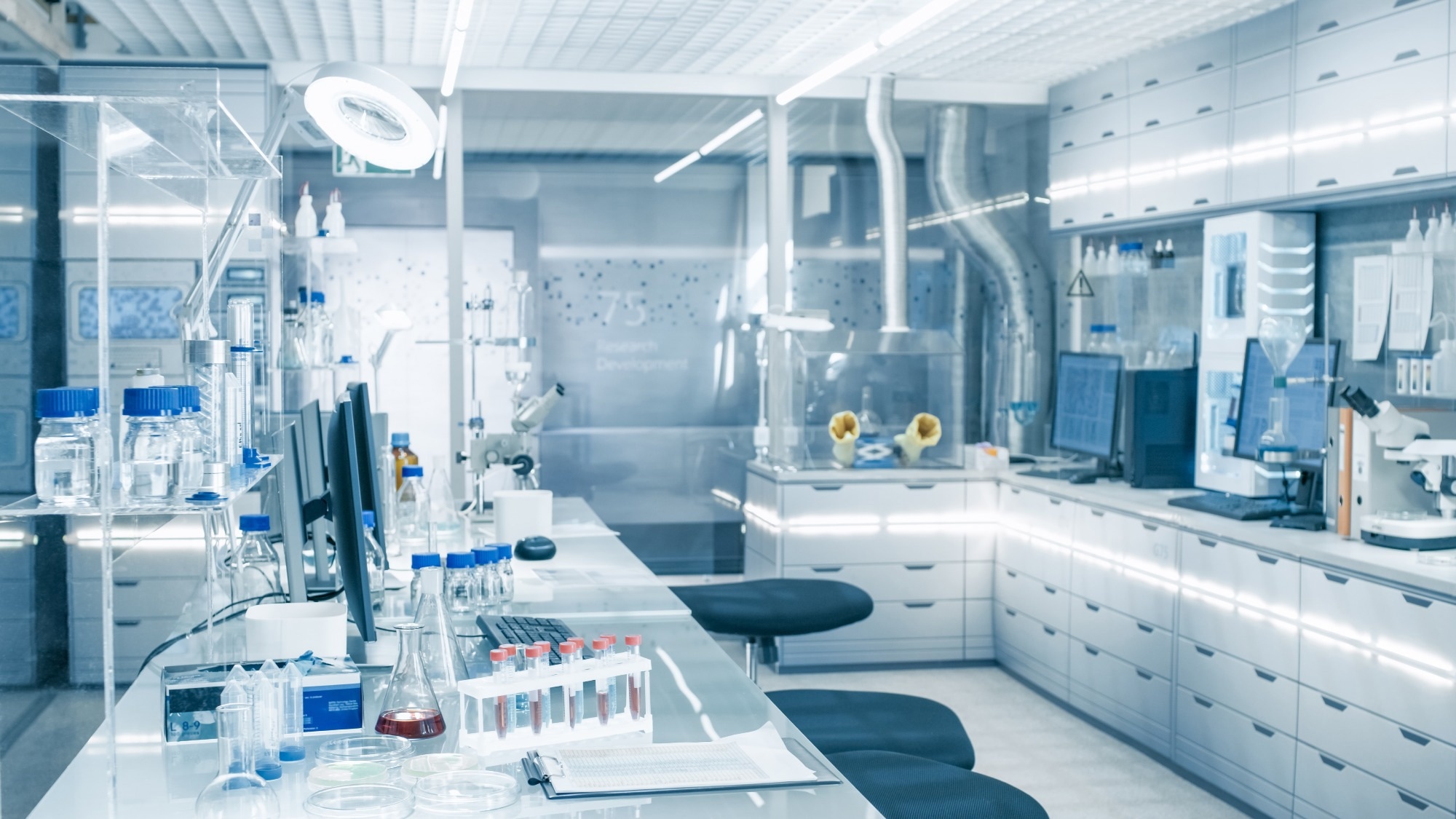To begin, could you provide an overview of Trilobio and the motivation behind its founding?
Thank you. I’m Roya, CEO and co-founder of Trilobio. Our mission is to make fully automated laboratories accessible to every biologist. We’ve been operating for about two and a half years, and our core innovation is a suite of modular robots—what we call Trilobots—designed to fully automate workflows in molecular and synthetic biology.
Currently, our systems are being used across the U.S. in areas such as biotherapeutics development, rare cancer treatment research, and bio-prospecting. We're still in the pilot phase but preparing for commercial launch soon.

Image Credit: Gorodenkoff/Shutterstock.com
What distinguishes Trilobio’s approach to laboratory automation from existing solutions?
Affordability and usability are at the heart of our platform. Trilobots are modular, snapping together like Legos, and they can transfer plates between each other—eliminating the need for manual handling. Critically, our system does not require expensive robotic integration services to function. We’re removing the traditional barriers that have made automation inaccessible for many labs.
Manual calibration is a common challenge in automated systems. How does Trilobio address this issue?
We’ve developed an auto-calibration system that completes the process in about eight minutes. Typically, this would involve manually measuring labware dimensions with calipers—a process that can take days or even weeks. Our robots perform this task automatically, which significantly accelerates setup and reduces human error.
Is prior programming or coding knowledge required to operate Trilobio’s platform?
Not at all. Our software is designed to be entirely no-code. We offer a comprehensive LIMs system that tracks all labware, tools, and reagents on a user’s deck. The software interface is intuitive and modeled after a traditional lab notebook. Once a user has documented their experiment, our research engine translates that into optimized machine code tailored to their specific Trilobot setup.
Can experiments be shared across different laboratories, even those with varying equipment configurations?
Yes, absolutely. Because our system operates on a higher level of abstraction, researchers can share their experiments regardless of the recipient’s specific configuration—whether they have more or fewer Trilobots, different pipettes, or alternative reagents. Our research engine adapts the experiment to the available resources, ensuring reproducibility and portability.
From your perspective, what broader impact could widespread lab automation have on the scientific community?
Our goal is to make full automation the norm rather than the exception. By freeing scientists from repetitive manual tasks, we can unlock new research opportunities—allowing experiments to run overnight or over weekends, for instance. Additionally, the creative potential that emerges when researchers can focus on high-level experimental design rather than low-level execution is immense. We believe this will catalyze a new wave of scientific discovery.
How has your background as a biologist shaped the development of Trilobio’s technology?
Coming from a biology background, I’ve experienced firsthand how expensive and inaccessible automation technologies can be. That’s why we’ve designed our platform to be both user-friendly and affordable. By removing the need for custom integration and lowering hardware costs, we’re making advanced automation feasible even for small academic labs—something that’s never been possible before.
Are there specific areas of research where you see Trilobio’s platform having the greatest immediate impact?
I’m particularly excited about the potential in microfluidics. Our platform can interface with microfluidic modules to miniaturize experiments, reduce reagent consumption, and accelerate workflows. I believe the combination of microfluidics and large-scale automation will reshape the field. In many ways, microfluidic chips could become the equivalent of GPUs for lab automation.
Looking ahead, what are the next steps for Trilobio?
Our immediate focus is on scaling and launching the platform to bring automation into more labs. Long-term, our vision is to make high-throughput, reproducible experimentation accessible to every scientist, regardless of lab size or funding. We’re excited to help shape a future where automation accelerates innovation across the life sciences.
Watch the full video interview from SLAS 2025 below:
About the Interviewee
Roya Amini-Naieni is the CEO and co-founder of Trilobio. She studied mathematics, computer science, and biology at Harvey Mudd College, where she founded a synthetic biology lab with grant support from the college president. Her research experience spans institutions including the University of Washington, Harvey Mudd College, and Asimov. Roya also founded the first non-collegiate iGEM team in Washington state. She is a 776 Fellow and was named to the Forbes 30 Under 30 list.
research experience spans institutions including the University of Washington, Harvey Mudd College, and Asimov. Roya also founded the first non-collegiate iGEM team in Washington state. She is a 776 Fellow and was named to the Forbes 30 Under 30 list.